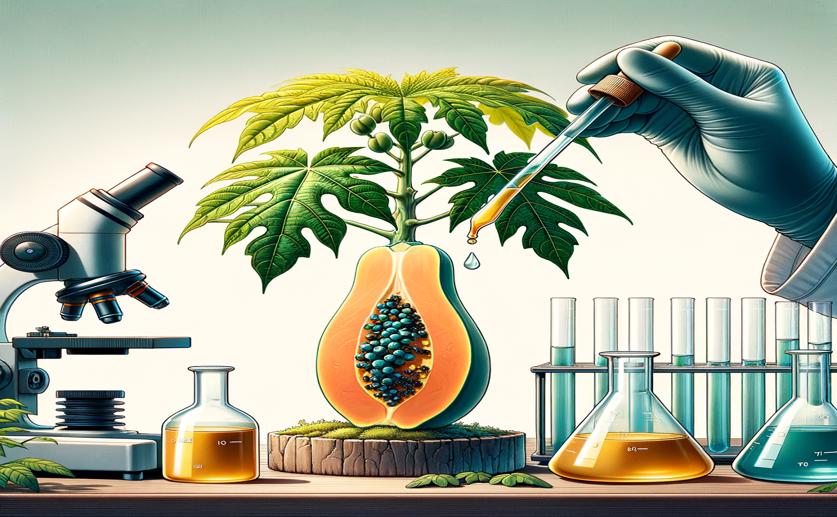
Creating Eugenol-Based Compounds to Protect Papayas from Harmful Fungi
Jenn Hoskins
22nd May, 2024

Image Source: Natural Science News, 2024
Key Findings
- Researchers at the Universidade Federal do Espírito Santo synthesized 19 new eugenol derivatives to combat fungal diseases in papaya crops
- Four of these compounds significantly inhibited the growth of the fungus Colletotrichum gloeosporioides, reducing mycelial growth by over 80% at 100 ppm
- Molecular docking studies showed these compounds block the fungus's key enzyme, preventing it from functioning properly
AgricultureBiochemPlant Science
References
Main Study
1) Design and Synthesis of Eugenol Derivatives Bearing a 1,2,3-Triazole Moiety for Papaya Protection against Colletotrichum gloeosporioides.
Published 21st May, 2024
https://doi.org/10.1021/acs.jafc.4c00440
Related Studies
2) Recent Approaches towards Control of Fungal Diseases in Plants: An Updated Review.
3) Evolving challenges and strategies for fungal control in the food supply chain.
4) Management of Post-Harvest Anthracnose: Current Approaches and Future Perspectives.



 18th May, 2024 | Greg Howard
18th May, 2024 | Greg Howard